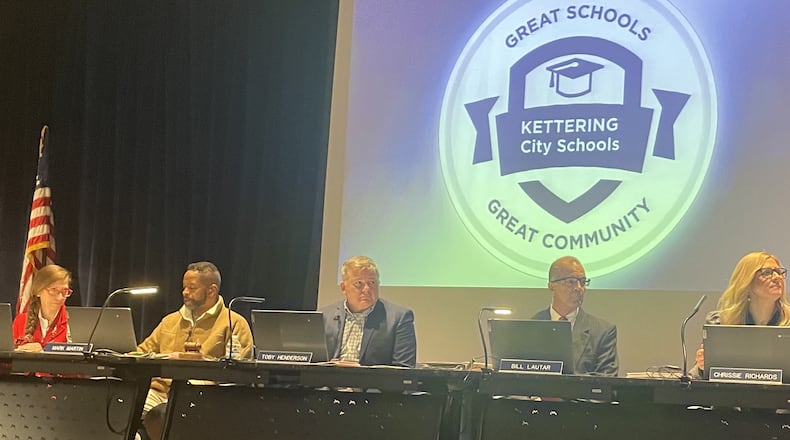The Kettering board of education voted March 5 for the district’s legal counsel to file complaints with Montgomery County’s board of revision “so that we ensure that everybody’s paying their fair share when it comes to school taxes,” board President Toby Henderson said.
Kettering records list 20-plus properties that the school district disputes.
Their combined sale prices, Henderson said, were more than $40 million higher than the value at which the county auditor’s office has them set.
“So, there’s essentially additional tax that these commercial properties’ owners should be paying because the value of their properties currently is not set appropriately,” Henderson added.
Dayton Public Schools’ board has not yet voted on the resolutions they’re considering. Some of the Dayton properties being challenged include three apartment buildings, a car dealership and properties owned by Dave Chappelle’s real estate holding company, Iron Table Holdings LLC.
If approved, Dayton Public’s challenge could raise the total property values by over $21 million, according to a Dayton Daily News analysis.
A law passed two years ago, House Bill 126, dictates that public bodies like school districts must pass a resolution authorizing the filing at a public meeting and give notice to the property holders of the valuation challenge.
Under the same law, challenges can only be brought against properties sold in the last tax year whose sale price was at least 10% higher, and more than $535,000 higher in value than the auditor’s value.
DPS Treasurer Hiwot Abraha said the school district worked with lawyers to identify these properties.
Mike Brill, a spokesman for the county auditor’s office, said the legislation changed how schools could file these challenges, but that this practice of challenging values has been relatively common for decades.
Why it matters, how it works
Ohio public school districts are largely funded by property taxes.
The taxes are levied on 35% of a property’s value, and one mill represents $1 for every $1,000 in taxable property values. So a new 1-mill tax against a home valued at $100,000 would collect $35.
But the calculation is not always that simple. Most homeowners also get tax exemptions of about 12.5% on many levies that were passed years ago, which brings the amount per mill down to about $30.63 for those levies.
The state’s constitution allows for the first 10 mills of property taxes to exist on property owners’ tax bills without any prior voter approval. This is called “inside millage” and those 10 mills are split up differently in each community among the schools, city, county, and sometimes other agencies. Outside millage, on the other hand, is what voters approve through levies.
For most outside millage, when property values go up — as they did recently in Greene and Montgomery counties — the Ohio Department of Taxation adjusts the effective millage, or the rate at which properties are taxed, to make sure the school, or the township levy, collects the same amount of money as they did before.
School districts in counties with rising property values will see an increase in revenue from inside millage. But the total amount of taxes collected from most outside millage, which funds operations for schools, do not change unless voters approve it.


